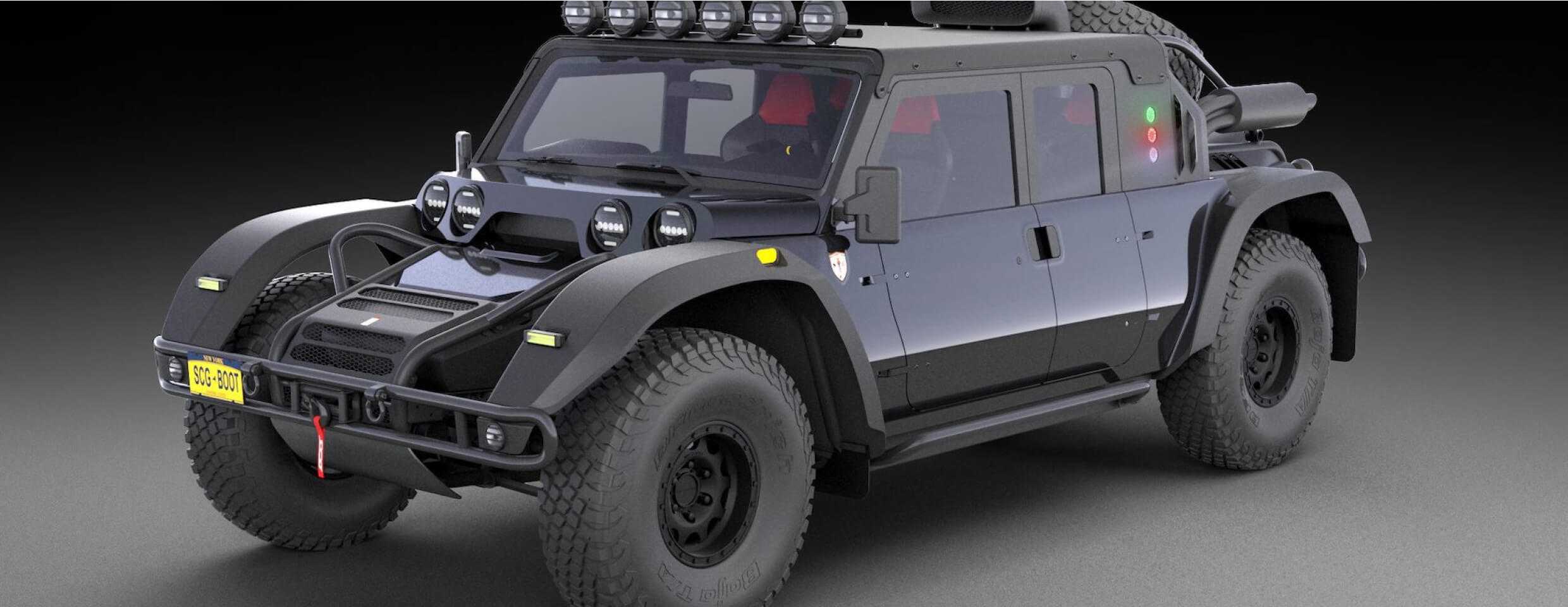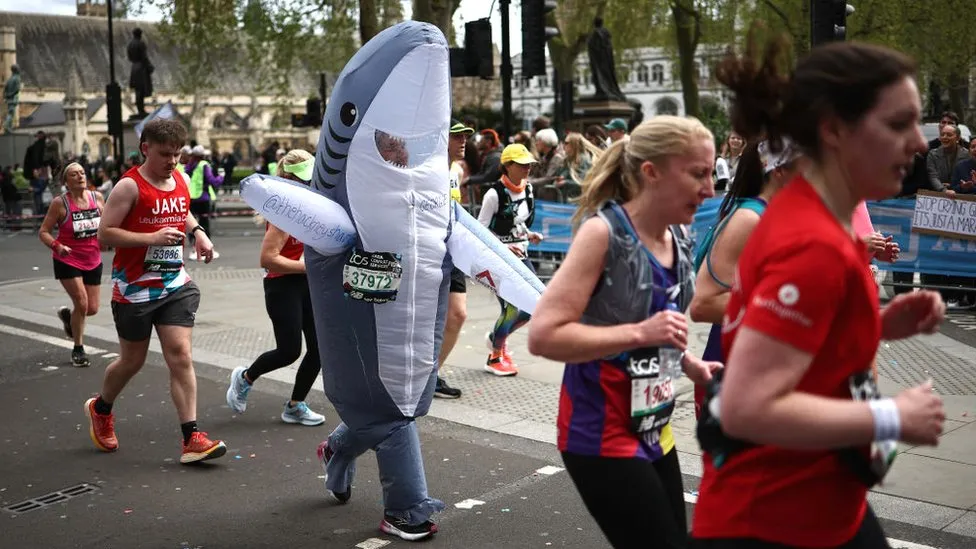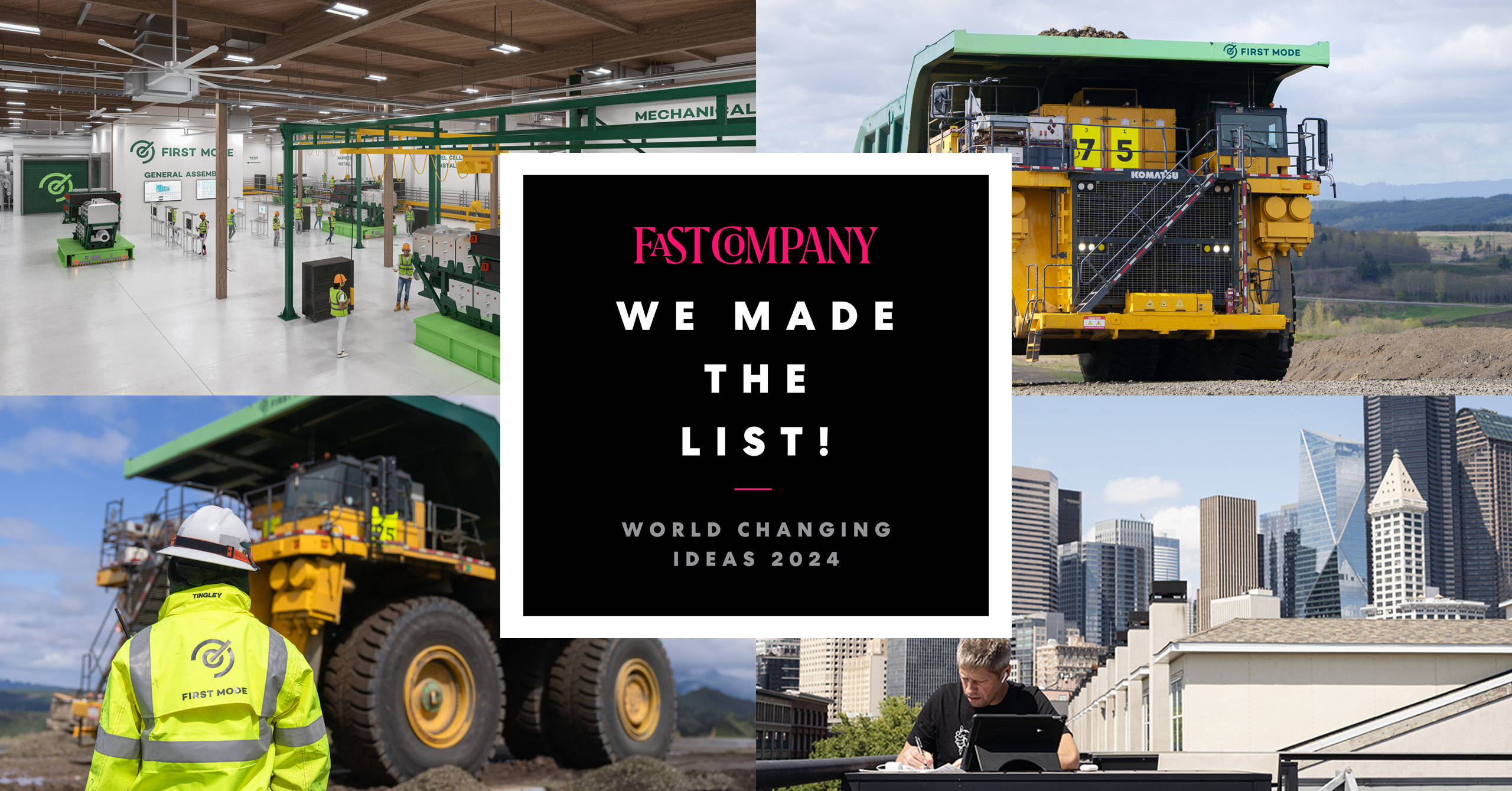Context and challenges
First Mode’s challenge was presented by high-performance car manufacturer Scuderia Cameron Glickenhaus (SCG)—to build a zero-emission hydrogen truck that could race in the 2022 Baja 1000. The Baja 1000 occurs every year in Mexico across the Baja California Peninsula, and is widely held to be the world’s most challenging off-road endurance race.
The First Mode and SCG collaboration will use a fuel cell powertrain to complete the almost thousand miles of off-road track within the allotted 40 hours.
Fuel cells create power by combining hydrogen and oxygen in an electrochemical process that generates electricity, with the only byproduct being water or water vapor. The challenge we faced was how to make a fuel cell work within the conditions it would face. Hydrogen fuel cells need to operate at specific temperatures and be isolated from the effects of vibration. Not only is the environment of the Baja 1000 extremely dirty and rugged, it also has enormous temperature swings from day to night. As if that weren’t enough, spectators have been known to plant booby traps along the route, like jumps or dips, often signaled by large crowds gathered to watch the surprise obstacle’s effect.
We also would need to thoroughly vet the system’s engineering to work within SCG’s platform—a truck called the Boot—and ensure that refueling options could support not only a race completion but a class win for the FCEV Boot.
Partnership and client relationship
Scuderia Cameron Glickenhaus (SCG) is a different kind of race car manufacturer. SCG builds cars that can zip around a racetrack, and then it transforms those cars into legally compliant vehicles for the real world. Their ethos: “You come to us for race cars you can drive on the road.”
A few years back, SCG set its sights on the Baja 1000, a very different kind of race than the sleek racetracks. So to tackle the race, they envisioned a very different kind of vehicle.
The origin story is this: The legendary Vic Hickey was working with GM on off-road vehicle research and development. As a side project, he began toying with a new vehicle powered by a Chevy V-8 engine with four-wheel drive and independent suspension. The result was the Original Baja Boot, which he built in 26 days. The race buggy could reach speeds of over 100 mph…in sand. In 1968, the Boot was bought by actor Steve McQueen and, after several mechanical failures at the race that would become known as the Baja 1000, it won the very first Baja 500 in 1969.
When SCG had the opportunity to buy the original Boot at auction, they seized it. A new Boot model emerged, which both ran and won its class in the Baja 1000 in 2019 and again in 2020.
So how did First Mode get involved in all of this? In late 2019, we were pursuing partners for a NASA lunar rover application, and were seeking unique collaborators to contribute new and different perspectives. We had read about SCG’s Baja 1000 victory, and felt instantly curious about SCG and the work they were doing. Their interest in advancing technology and determined approach to projects appeared to be a great cultural fit for First Mode. We reached out, discovered we had a lot of similar interests in pushing the limits of clean power, changing people’s minds about technology, and pursuing sustainable solutions—all in a really crazy environment. When SCG proposed we outfit the Baja Boot as a zero-emission truck, we were quick to welcome the challenge.
What we did
To be clear, when we set out on this project we had no idea what our final design would look like. In fact, we modeled over one million possible vehicle combinations to quickly throw out incompatible solutions and to hone in on the options that would have the highest performance. These vehicle combinations were put to the test by analyzing the race route and data from 2020—everything from terrain to weather conditions to driving profile. Each build option was measured for power, torque, and energy, and parts were rated based on weight, timing, cost, and energy capabilities.
With cryogenic liquid hydrogen selected as a good fuel source for a lightweight, long-range option, we set about building the refueling system that would support the vehicle during the race itself. The refueling solution would need to be transportable, self-powered, and fast. We ran our modeling software to determine exactly when and where the FCEV Baja Boot would be low on fuel and matched that with the service and access road availability to gameplan our refueling set-up.
All of these parameters provided a defined space in which we built our solution—a testament of our commitment to building out holistic systems that support our technological endeavors. We contextualize the entire operation from start to finish, constantly examining the big picture to ensure we haven’t missed anything that could compromise the success of the product itself.
The use of fuel cells and liquid hydrogen will make this vehicle the first of its kind and certainly the first FCEV to participate in the Baja 1000.
The impact
Think of racing like fashion. What starts on the runway is eventually worn by the masses. Racing is the same model, serving as the forefront of vehicular development which will eventually inform the kinds of vehicles that are part of our every day. This is the hope of SCG, which envisions offering long-range workhorse fuel-cell trucks for fleet use.
The success of the FCEV Baja Boot will be a technological recruiting ground, showing that a vehicle powered in this way can perform one of the harshest tasks on the planet. The application of this model to bulldozers, ocean vessels, and trucks could significantly cut emissions as we race against climate change.
That’s why it’s so important to start with the most difficult of tasks. The FCEV Baja Boot is an extremely engineered product because if it works in the Baja 1000, it can work anywhere. It’s all flat road from there.




